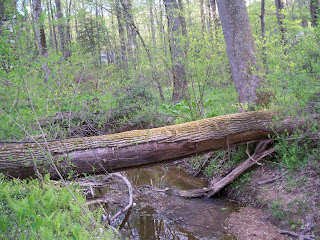Unendangered
Of the three houses I lived in growing up, all had woods and fields nearby where I could ramble. These weren’t parks but undeveloped land, and about them hung an air of impermanence. The neighborhood I left to go to college was once known as Banana Hollow and had been known locally for its fine sledding hill. But the slope had long since fallen to the bulldozer.
I roamed the edges and bottomlands of this territory — just as I had the Ware farm which backed up to our previous house. That land, a plentiful pasture studded with the occasional giant oak, was home to a herd of grazing cattle. Some mornings I woke to the sound of their tramping and munching on the other side of our fence. But the Ware Farm was gone soon after we left that house, when I was a sophomore in high school.
All this is to say that when I hike through Folkstone Forest and the adjacent stream valley park, I am mindful of the gift, the certainty of this semi-natural land. Sure, in winter you might glimpse houses along its periphery, but plunge deep enough and all that’s visible is tree and fern and vine. It is stream valley land, prone to flooding and therefore protected.
I walk in an unendangered suburban wilderness. And I am grateful for that.
